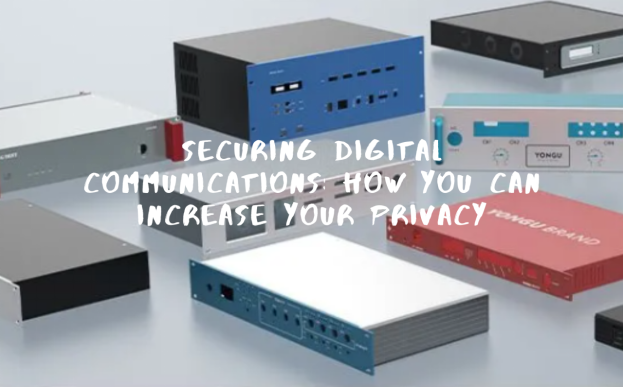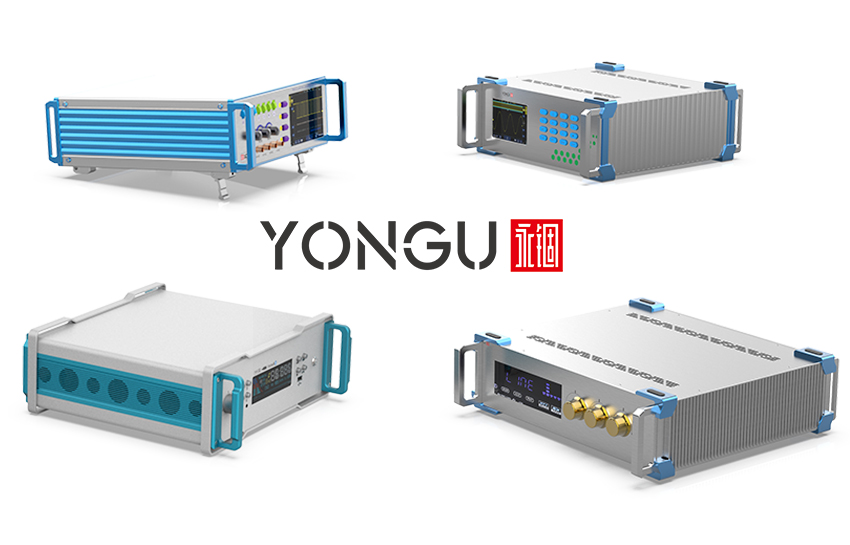
We can use digital communication to communicate with loved ones across great distances. As a result, corporations and organizations may have a more transparent and successful discourse through digital communication.
As a result, digital communication speeds up meetings and negotiations by allowing for the rapid exchange of information and the coordination of efforts among team members.
As a result, digital communication speeds up meetings and negotiations by allowing for the rapid exchange of information and the coordination of efforts among team members.
The Importance of Secure Digital Communication
Before instant messaging, people communicated with one another by exchanging letters or sending long-distance telegrams. As a result of the Industrial Revolution, digital communication has risen significantly, as has constant communication with suppliers, merchants, business partners, and employees.
Most of our correspondence, in general, initially began with mail. Then, as technology advanced, we began to make and receive phone calls and send and receive audio messages. Following this, the emergence of fax and email communications ushered us into the digital age.
Aside from making it easier for people to interact quickly and effectively, technology has also opened up a wide range of potential dangers. Hackers and other cybercriminals may now prowl digital information by using the internet. Ensuring safe and secure digital communication when utilizing the internet is much more critical than before.
Most of our correspondence, in general, initially began with mail. Then, as technology advanced, we began to make and receive phone calls and send and receive audio messages. Following this, the emergence of fax and email communications ushered us into the digital age.
Aside from making it easier for people to interact quickly and effectively, technology has also opened up a wide range of potential dangers. Hackers and other cybercriminals may now prowl digital information by using the internet. Ensuring safe and secure digital communication when utilizing the internet is much more critical than before.
Strategies for Protecting One's Digital Communications
Digital communication has numerous dangers, but businesses and individuals may also mitigate these dangers. Some of the most excellent methods for ensuring safe digital communication are discussed here.
- Use a Proxy Website or VPN
To make your online communications private and anonymous, pretending to be someone else is one of the simplest methods. Using a proxy or virtual private network accomplishes the same thing.
In the digital era, the most secure approach to preserve your privacy is through a virtual private network (VPN). Connecting your gadget to the internet is like constructing a bridge between them. This tunnel is encased in an armor of SSL security and other privacy protection measures to ensure that no one can monitor your online actions.
In the digital era, the most secure approach to preserve your privacy is through a virtual private network (VPN). Connecting your gadget to the internet is like constructing a bridge between them. This tunnel is encased in an armor of SSL security and other privacy protection measures to ensure that no one can monitor your online actions.
- Data Encryption
Encryption of your digital communications is ensured via a little more sophisticated process. Businesses that often transfer sensitive information are more likely to utilize encryption, but an increasing number of consumers are turning to it as a privacy-protection tool. It is impossible for anybody but the intended receiver and sender to decipher encrypted information, so even if a hacker had access to your data, they would be unable to read it. You can do this by utilizing a VPN, but IBM Security Guardium Data Encryption can also be used to encrypt your data.
- Be Careful with Links & Attachments in Emails
Credential stuffing is one of the most popular methods of obtaining private information from an individual. Criminals impersonate well-known organizations or close friends to get sensitive personal data via email. In the same way that they utilize malware and ransomware, they also use other infections.
You should be wary about clicking on links or downloading files in any email, even if it comes from a person you know.
You should be wary about clicking on links or downloading files in any email, even if it comes from a person you know.
- Unique & Distinctive Passwords
To reiterate, hackers and cybercriminals would be able to easily access all of your internet accounts if you use the same password for all of your accounts.
When enrolling for an online account, using strong, unique passwords is critical. Make sure you use a different password for every new account you establish. Of course, remembering a different password for each website that you visit might be a challenge. To reduce this issue and struggle use of password management is recommended via third-party programs.
When enrolling for an online account, using strong, unique passwords is critical. Make sure you use a different password for every new account you establish. Of course, remembering a different password for each website that you visit might be a challenge. To reduce this issue and struggle use of password management is recommended via third-party programs.
- Use Two-Factor Authentication
When it comes to protecting your accounts and personal information, two-factor authentication is one of the most effective methods. By requiring a second element of identification in addition to your primary one, two-factor authentication keeps unauthorized users out of your accounts.
Single-factor authentication refers to the usage of a single login and password. In contrast, two-factor authentication will need a PIN or password, a phone or email account, and even something the user is, such as a fingerprint scan or pattern recognition.
Single-factor authentication refers to the usage of a single login and password. In contrast, two-factor authentication will need a PIN or password, a phone or email account, and even something the user is, such as a fingerprint scan or pattern recognition.

- Use Anti-Malware & Anti-Virus Protection
Malware, or malicious software, is a standard tool used by hackers to access your computer and steal or erase data. Viruses may be able to achieve the same thing.
Anti-malware and anti-virus software should permanently be installed on every computer connected to the internet. If you have a computer, it's free or reasonably priced. Use applications developed for the same purpose to safeguard mobile devices.
Anti-malware and anti-virus software should permanently be installed on every computer connected to the internet. If you have a computer, it's free or reasonably priced. Use applications developed for the same purpose to safeguard mobile devices.
- Follow the Principle Of Least Privilege
An information security concept known as the principle of least privilege (PoLP) is one in which a person is granted just the privileges they need to accomplish their job duties. It is widely accepted as a recommended practice in cybersecurity and is an essential step in securing privileged access to high-value data and assets. The concept of least privilege is not limited to human beings. Applications, systems, and linked devices can benefit from the model's approach.
- Beware of Public Wi-Fi
One of the problems with using free public Wi-Fi is that it comes with a slew of security dangers, such as the possibility of becoming the victim of a Man-in-the-Middle attack, unencrypted networks, malware dissemination, and eavesdropping and tracking. Many companies assume they are offering a vital service to their consumers by keeping their networks secure, but this is not always the case.
- Turn Off Location Data
Every mobile device provides location information that can help you locate yourself. Governments, companies, or hackers may be spying on you, and you may protect yourself by disabling location services on any device that connects to the internet.
YOUNGU RACK MOUNT ENCLOSURE
Introduction
The digital area is continually growing, and people are taking digital threats seriously, as are communication device design concepts such as YOUNGU's Rack Mount Aluminium Enclosure Box, which is ideal for Digital Communication and Electronic Devices enclosure.
The YONGU C01A 482*1U*L 19-inch Rack Mount Case aluminum enclosure is available in 26 distinct variants with five different rack heights choices when it comes to design versatility, customization, and quick and straightforward installation from U1 to U4 is one of the perfect choices for digital communication gadgets enclosure.
The YONGU C01A 482*1U*L 19-inch Rack Mount Case aluminum enclosure is available in 26 distinct variants with five different rack heights choices when it comes to design versatility, customization, and quick and straightforward installation from U1 to U4 is one of the perfect choices for digital communication gadgets enclosure.

Job Specific Features
These boxes are great for tiny job sites since they take up very little space. The process of assembling is swift and straightforward, and one may accomplish it with or without using a machine that may accommodate almost any type of communication circuit or gadget by customizing rack unit dimensions such as height, width, and length of the rack, as well as hole drilling, surface treatment, printing, and rack screw sizes.
There are various jobs where the excavation layout may alter over time. A rack-mounted aluminum chassis enclosure or rack-mount box can be configured in multiple ways to accommodate these changes.
This lightweight aluminum enclosure for electronics comes with optional extruded side panels, including one flat, one heat sink, two stripes, and optional 2u rack-mount handles. They are designed for Indoor & Outdoor applications with high impact resistance and side openings and the ability to withstand severe environmental conditions.
For further information and customized product of your requirements, visit our website: https://www.yg-enclosure.com/
You can also contact us at +86 13326782625 or write us at [email protected].
There are various jobs where the excavation layout may alter over time. A rack-mounted aluminum chassis enclosure or rack-mount box can be configured in multiple ways to accommodate these changes.
This lightweight aluminum enclosure for electronics comes with optional extruded side panels, including one flat, one heat sink, two stripes, and optional 2u rack-mount handles. They are designed for Indoor & Outdoor applications with high impact resistance and side openings and the ability to withstand severe environmental conditions.
For further information and customized product of your requirements, visit our website: https://www.yg-enclosure.com/
You can also contact us at +86 13326782625 or write us at [email protected].



